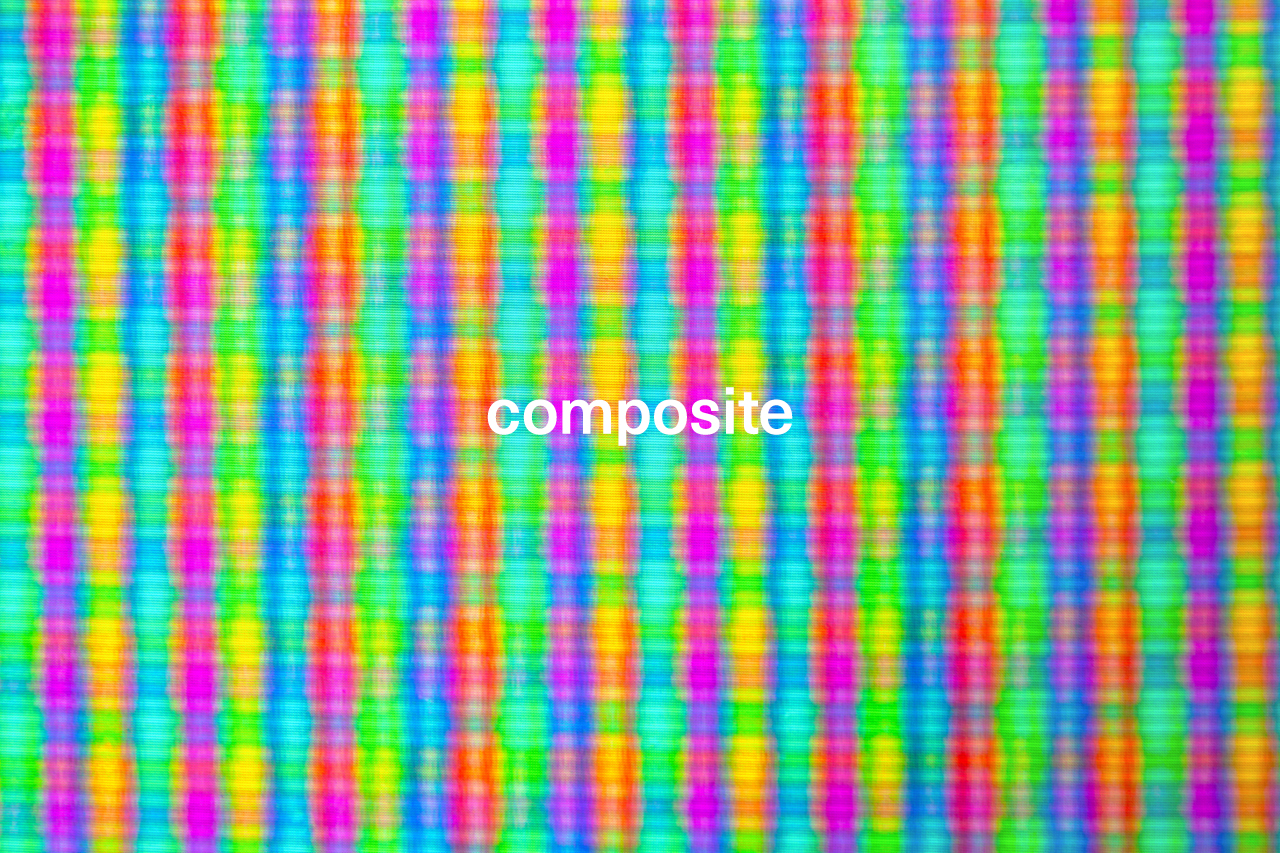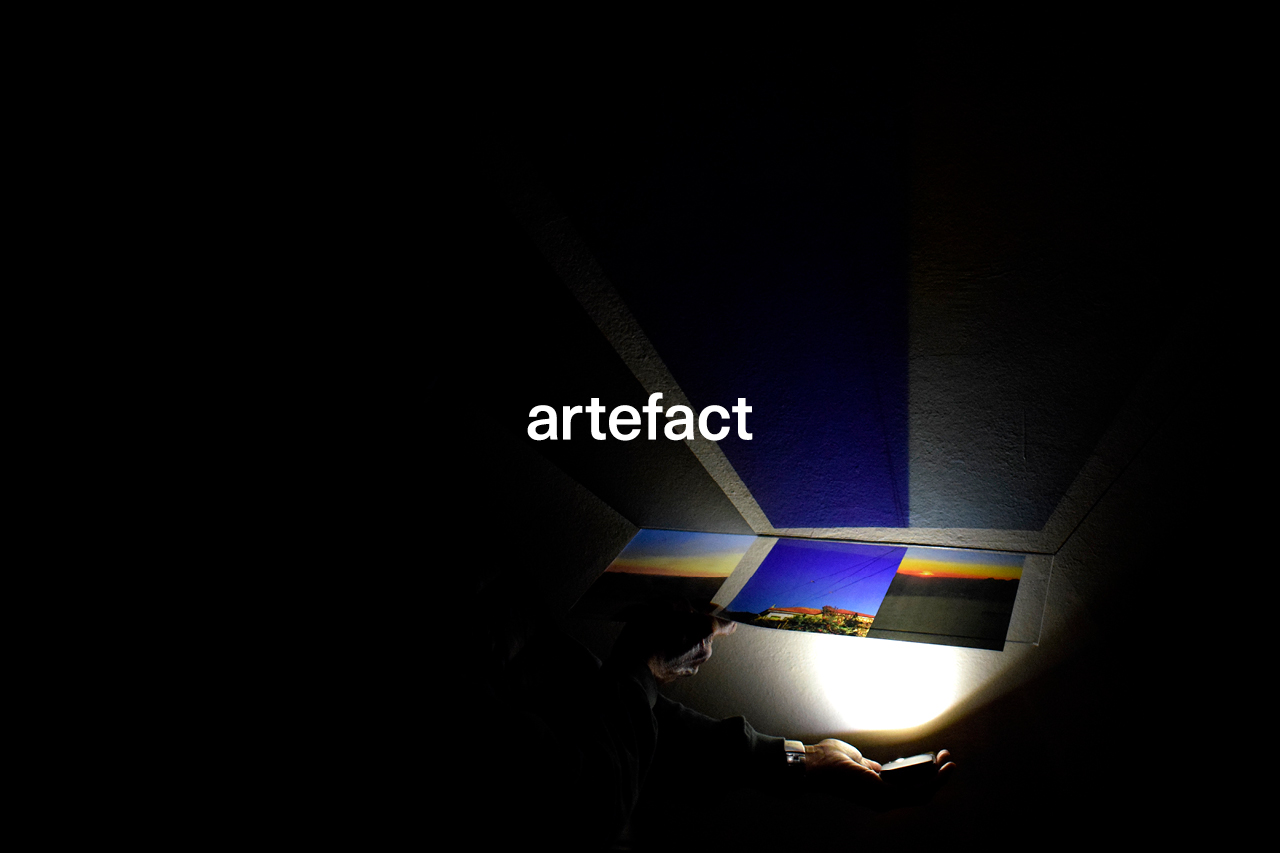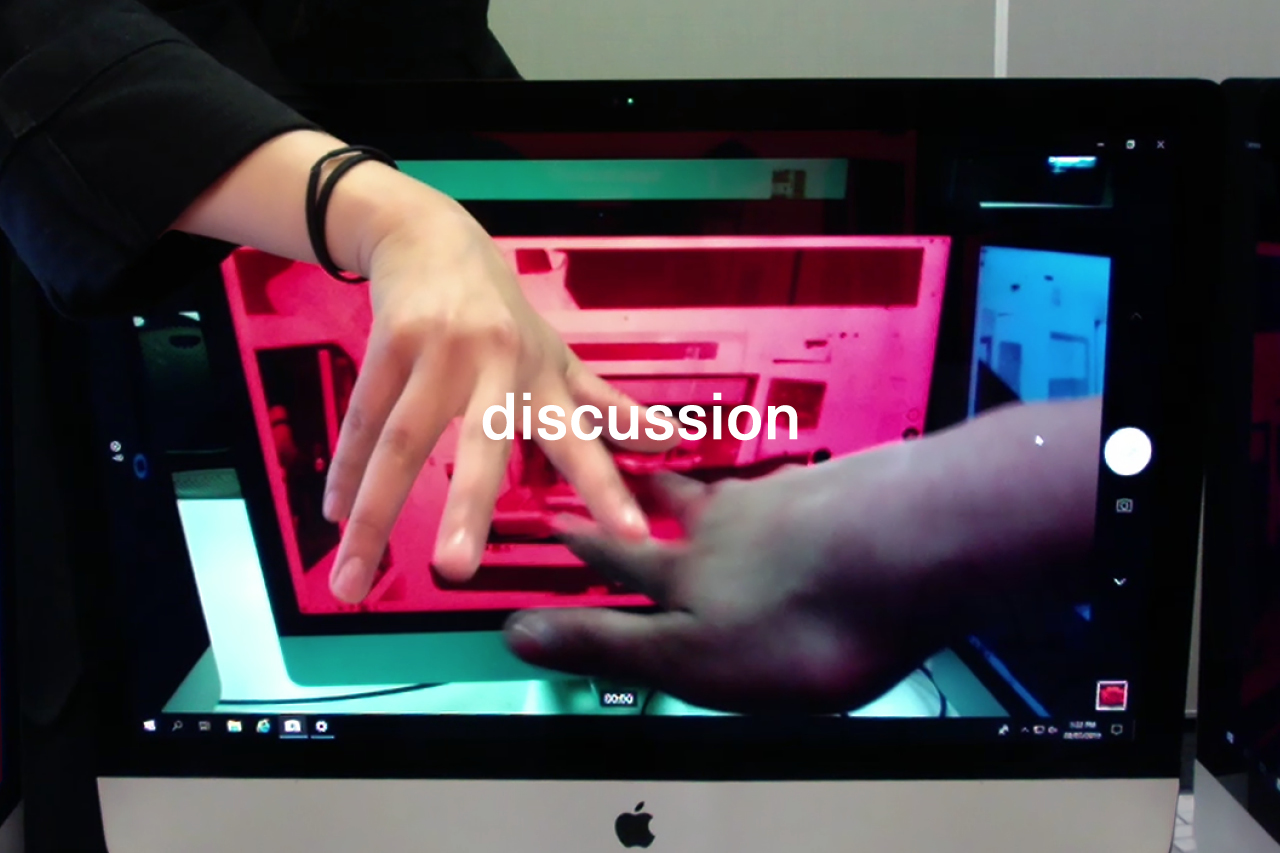defamiliarising
Defamiliarising presents thought-provoking experiments that challenge our conceptual understandings of the screen. It questions our relationship with the technology and offers alternative and unusual interactions.
Different conceptual understandings of the screen:
Alternative roles for screens in the process:
analogue feedback
analogue feedback
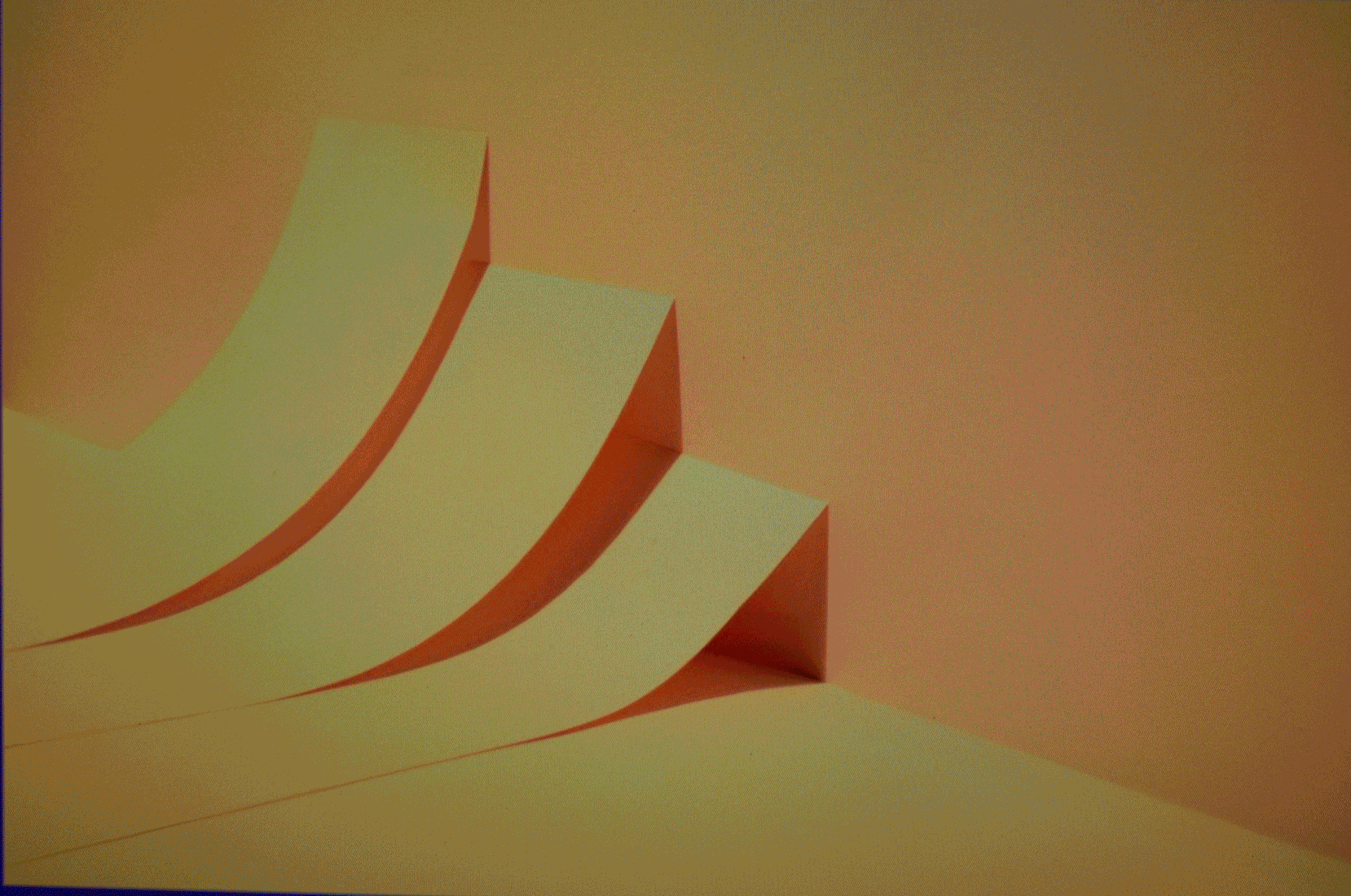
Screen as analogue feedback poses the question: how can we redefine the screen's role in the design process? Digital screens are primarily used as display surfaces where the content takes the main focus. Following the method used by French artist Corinne Vionnet's in her photography artwork Total Flag (2018), this experiment explores the screen as having a performative role.
Vionnet
In Total Flag, Vionnet employs the screen as an actor that is integral to the final aesthetic. To create this work, she photographed the US flag displayed on a screen, uploaded this photograph on to the screen and captured another picture. She repeated this process until the flag disfigured and disappeared. The remediation of information from the one screen to another causes data to get lost, contributing to the final look. This artwork demonstrates how a visual practitioner can manifest concepts of digital materiality through their work.
Total Flag 2018
Method
This experiment requires few materials: a screen, a camera device and a means to transfer photos from the camera source to the screen. You may use a tripod for consistency. Based on Vionnet's method: upload an image onto the screen, photograph the screen, upload the new photo to the screen and repeat the process until the desired result is achieved. It can be a time-consuming process.
Results
This method was applied to a random and mundane mix of imagery from my iPhone and laptop. Depending on the image, the effect generates different feelings and meanings; Vionnet projects a political message while a flower photograph raises questions about the image itself.
A trend emerged that the original image dissolved into reds, blues and greens. I tested this using a simple chart of CMYK and RGB colours that eventually turned into those before-said colours. Nonetheless, the beauty of this process is the unpredictability. The type of monitor, camera, cursor, framing, angle, lighting situation at the time and operating systems are just some variables that change the results.
Shot on a Nikon D3300

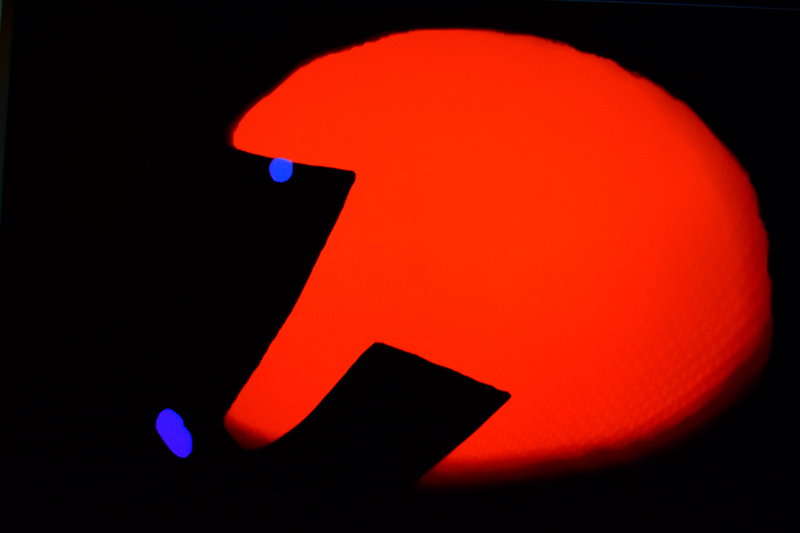
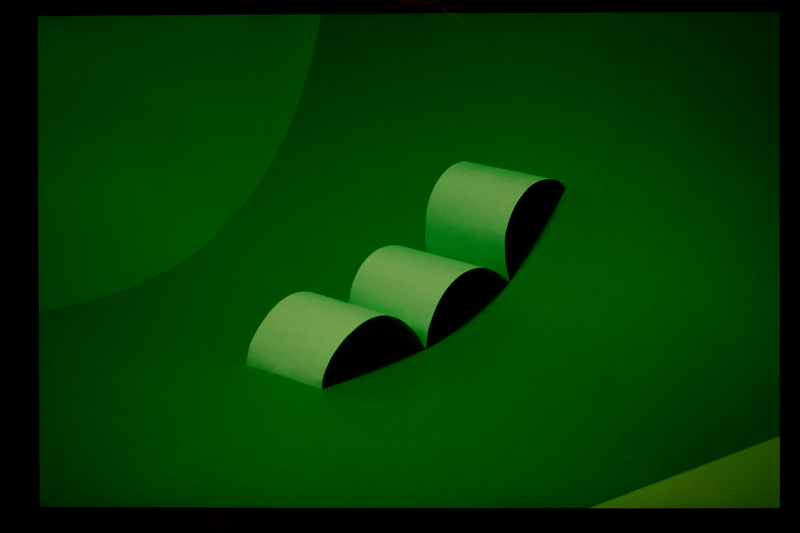

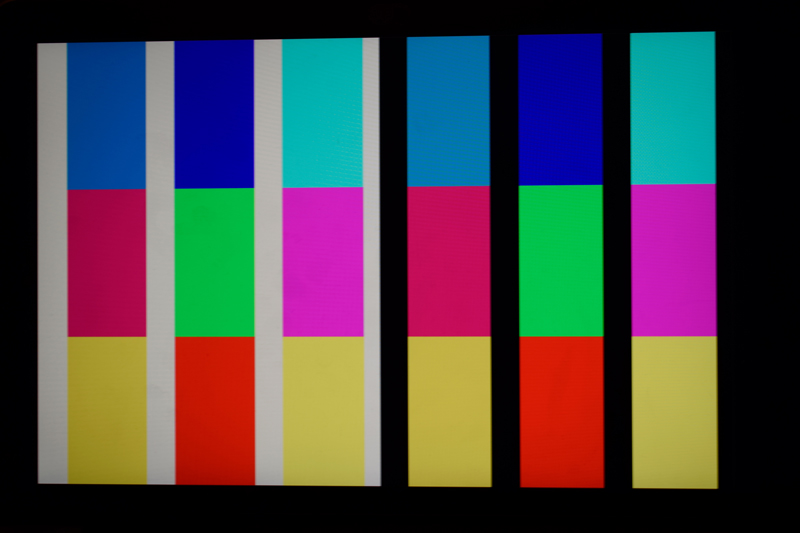
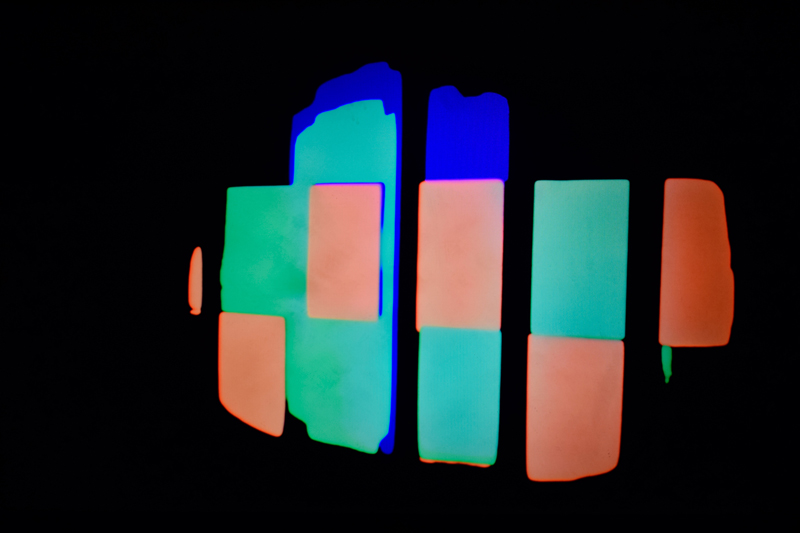
Shot on iPhone 6


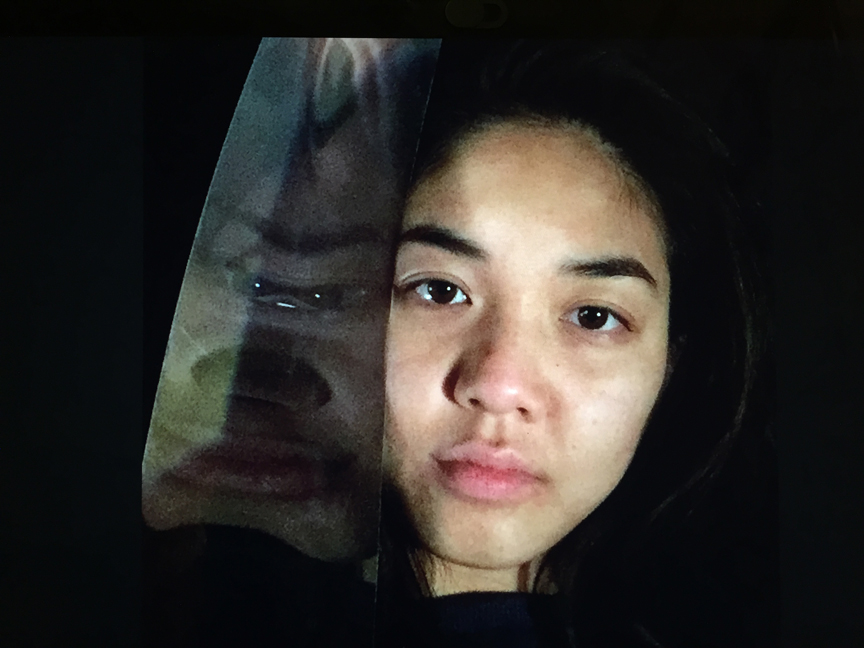
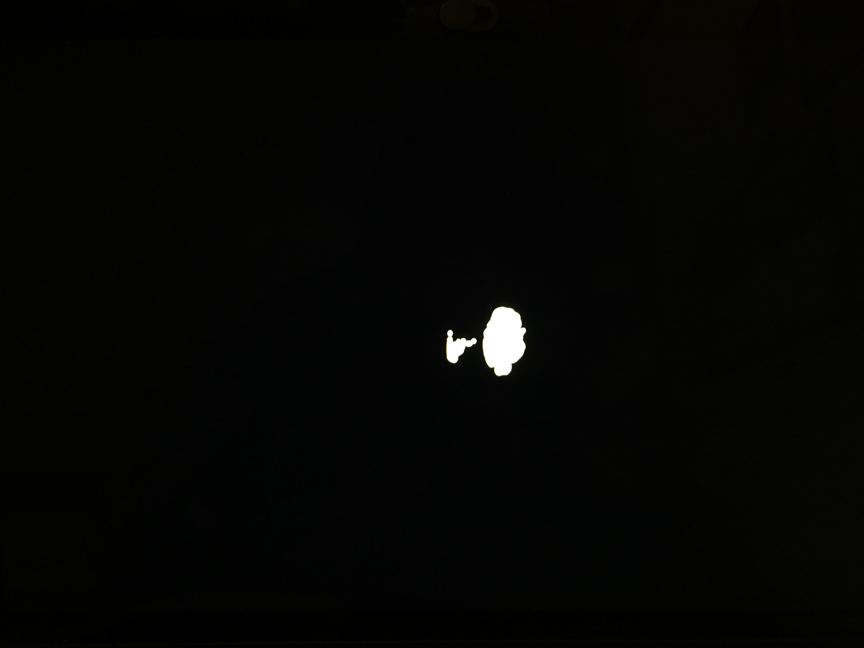
Exhibition
There's an interactive component where members of the audience can get their portrait taken in this way. Firstly, the participant gets their picture taken in the space against a black background. Then they can watch their face morph on the two screens that face each other that have been programmed to capture and send images. Lastly, the participant receives a printed postcard with their final disintegrated image.

conversation
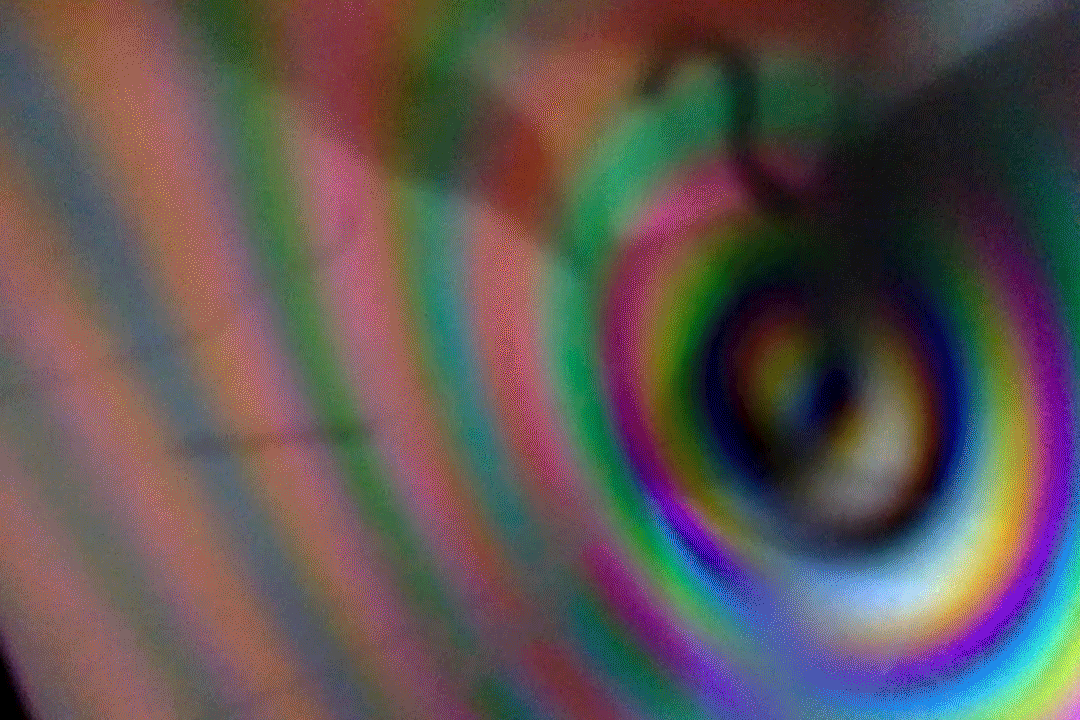
This experiment is in an extension of Screen as Analogue Feedback. By using digital screens and their in-built webcams, this experiment explores the visual effects of different input and output in video feedback loops. It involved rotating, shifted and moving computers. It also involved repositioning myself with the screen, altering my bodily relationship to the display.
Results
Chat 1 - Laptop to laptop
As you can tell by our reactions that the purple effect when we rotated the laptops was unexpected. I’m not 100% sure what caused that effect to occur, but it might be something to do with the polarising on the screens.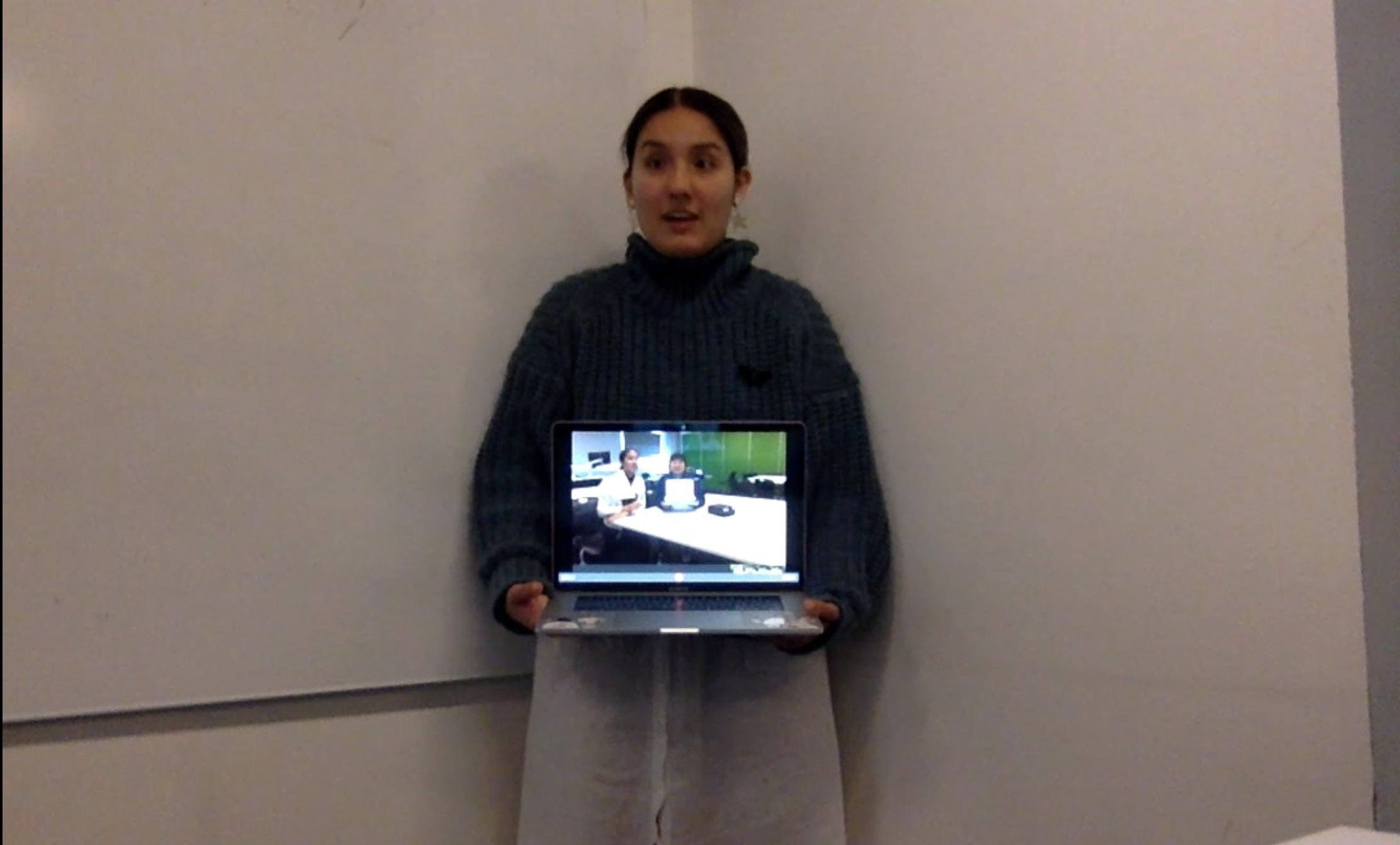

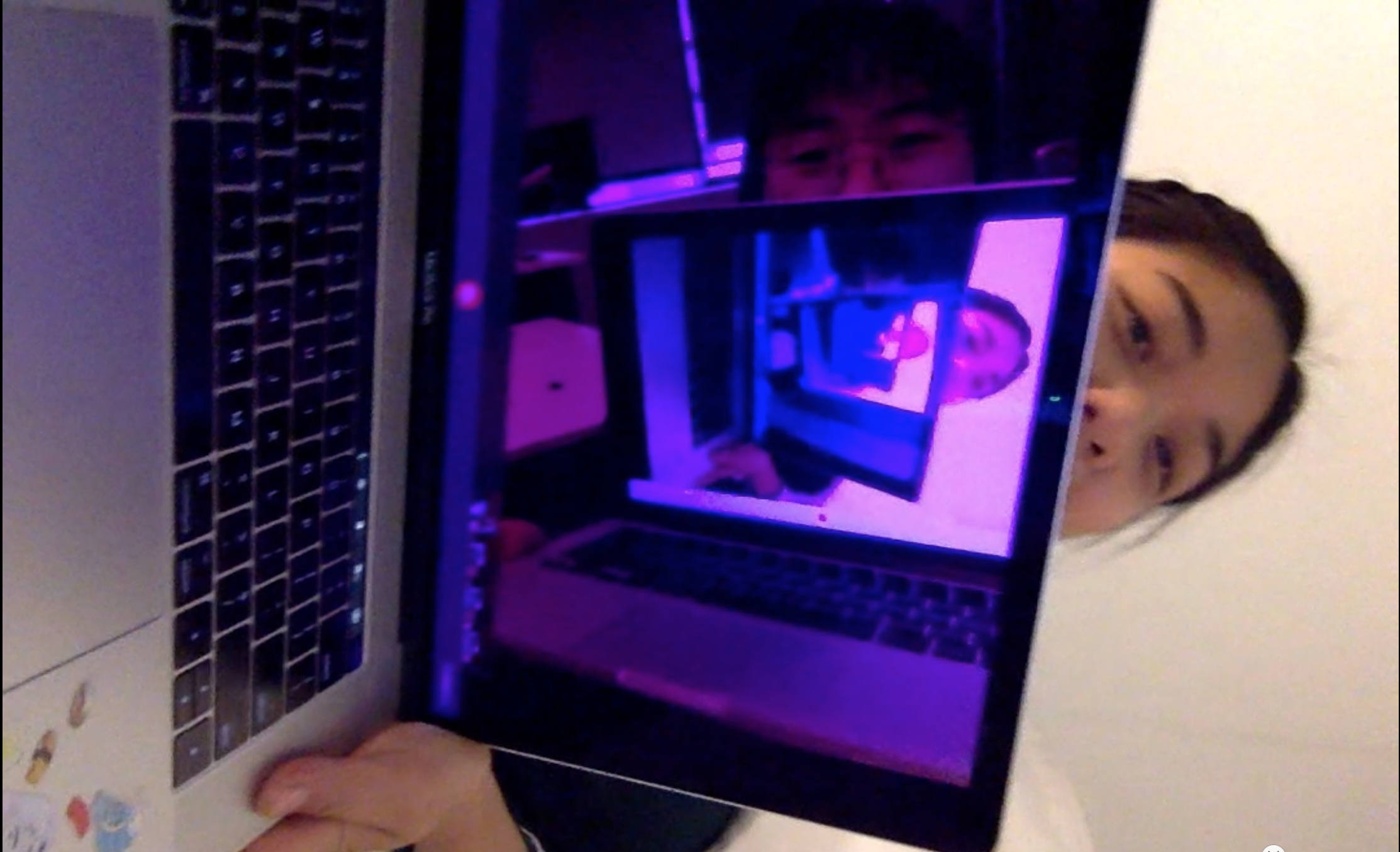
Chat 2 - Laptop to mobile
Holding a mobile phone up to the laptop’s webcam. Unlike in the previous conversation, the screens were not autonomous in creating unusual and unexpected patterns. For this radial design to appear, the mobile phone must sit at a specific angle to the webcam.

Try at home
It is simple to recreate this experiment at home using the webcam here. You will need two screens, both with camera functionality. Rotate, move, angle, shake, tilt the displays with each other. You may record the screens or act of moving the screens. Try using different pairings of screens to experiment. How do different input and output sources affect the final visual outcome?
new surface

Typically a screen has a rectangular form. This experiment breaks the rigid mould by considering any material or surface as a screen. By literally reframing the screen, new meanings and understandings of the content can manifest. What happens when four edges become ten edges? What happens when a flat surface becomes curved?
Precedent
In his essay, Mitchell Whitelaw discusses post-screen practice through examples of screens realised in different and unconventional material outcomes. He uses Daniel Rozin's mirrors to demonstrate explores how physical objects such as wood and dolls can move in such a way to emulate a screen or mirror.
Components
Content
In a Pipilotti Rist fashion, I projected my face onto different surfaces in this experiment. In doing so, this choice was criticised for creating conflicting intentions and meanings. Because humans are accustomed to seeking out the information on the screen, the content—my face—will naturally take the main focus. As my project intends to bring highlight the screen, my face was too distracting. However, for these material experiments, I became a reliable asset and reference for myself. For the exhibition and interactive component, participants will be able to select a photo from their phone gallery.Black surface
Projectors and screens do not display the colour black. This is because it uses RGB colour spaces. In a screen, each pixel consists of red, green and blue phosphors that sit behind a tinted plastic. When no lights are on, the pixel appears black (read more here). It was necessary for the experiments involving removing parts of the screen that the background could absorb as much light as possible to appear pitch black. Black cardboard reflected too much light. Perspex wasn't great either. I found that black felt worked the best. Generally, whiter surfaces project a better image than darker surfaces. Any light areas in the video/image will appear starker than the more shaded areas.Results
3D Surfaces




Manipulating the surface
In one of the videos, I filmed myself eating obnoxiously: chewing with my mouth open and talking while eating. These results stemmed from a desire to mask parts of the screen to remove the undesirable.Unlike plastics and metal, paper is easily manipulable. Using paint, tape and ripping actions, white paper becomes a dynamic screen which can enhance, subvert or create new ideas about the content. The affordances of paper fuelled further experimentation.
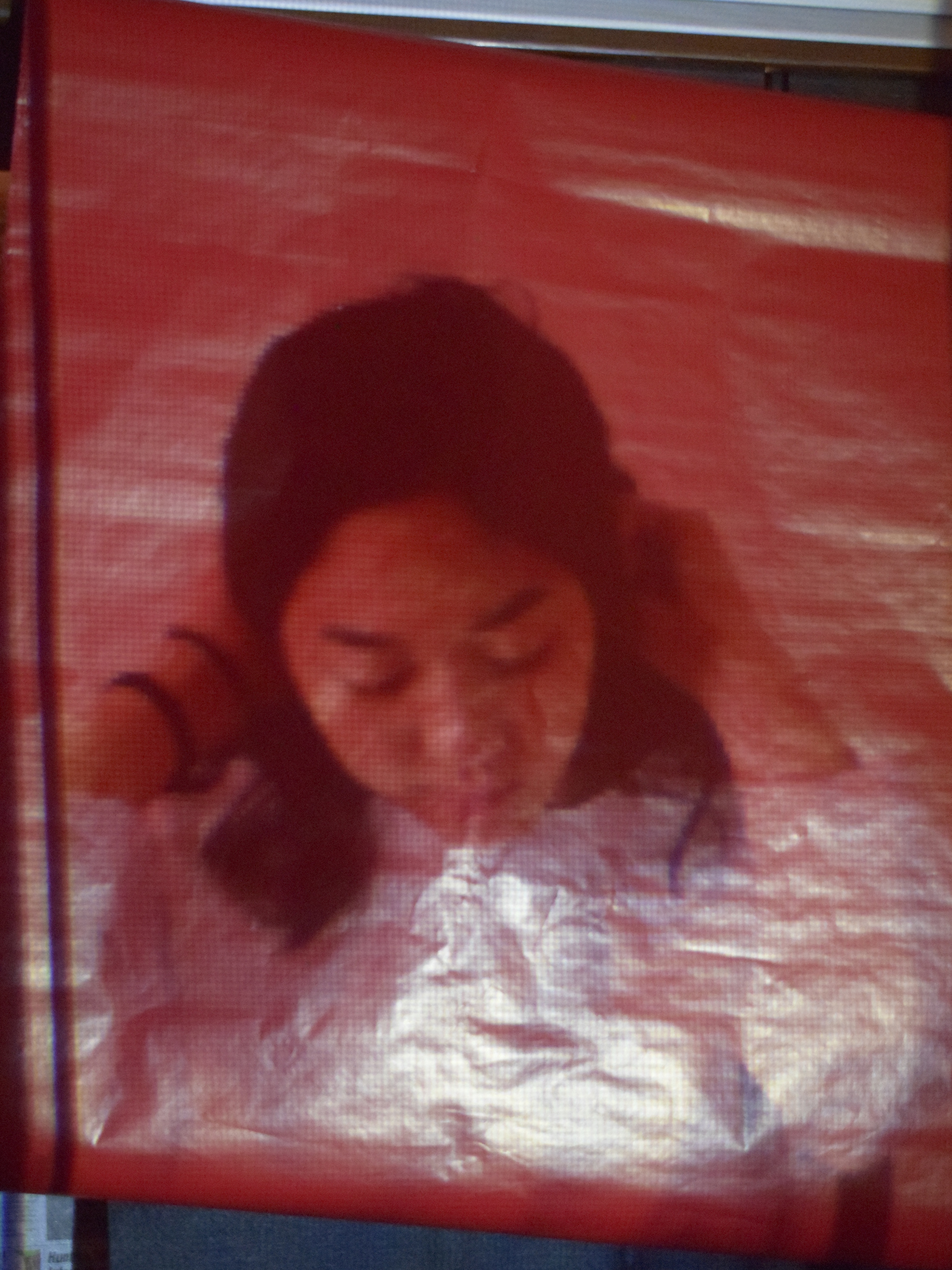
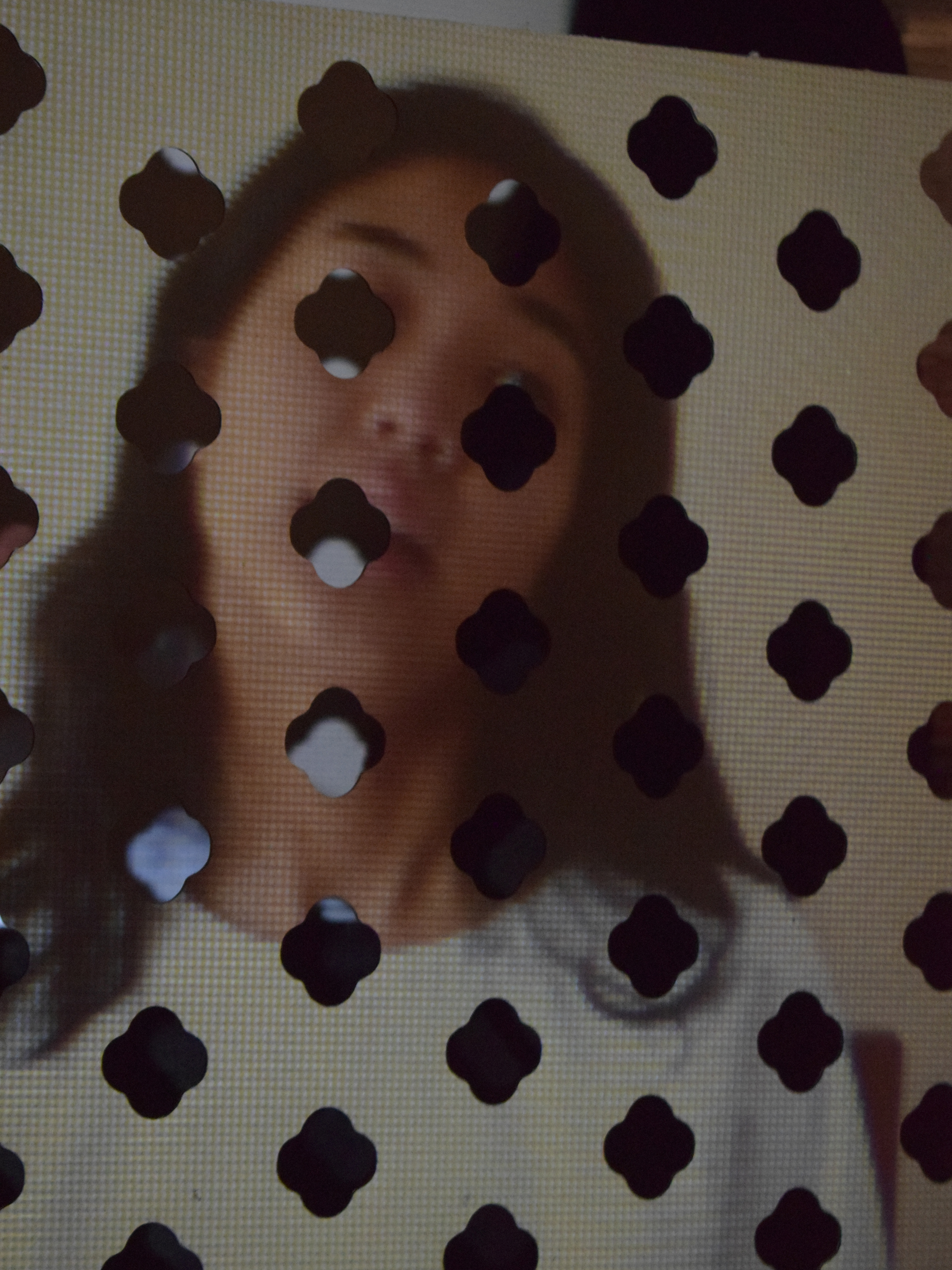

Try at home
To recreate this experiment, you will need a projector and a projection surface (roll of paper, found objects, screen). Select your content to upload. Project and start playing!
Some prompts:
-
overprojecting can lead to interesting results. Screen as colour explores projecting colour over colour.
-
project the same image/footage onto multiple different surfaces. How does the tone and meaning change?
-
Swiss artist Pipilotti Rist is a great reference for experimental video art. She uses scale to dynamic ways to enhance the messages of her videos which can inspire your own explorations.
